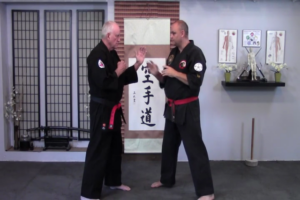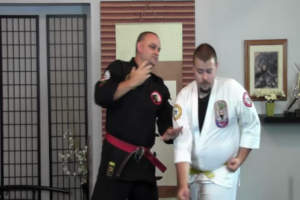
It is always interesting how life presents little lessons in the most unexpected way. These small lessons can have huge impact however in larger applications! Take the reaction of someone trained versus someone untrained to a violent encounter. They can be very different reactions with life affecting consequences!
Yesterday, while going to a local pharmacy to pick up medications for my wife, one of these little lessons happened with my 11 year old daughter and myself. We were walking to our vehicle when vehicles on either side of us simultaneously started to back out of their parking spaces with us between the two. My untrained daughter froze. I, on the other hand, almost ran over her trying to get out of the way and take her with me. Two opposite reactions to the same dangerous stimuli. It reminded me of what I have seen spending years doing combatives arts and working in Law Enforcement.
When encountered with violent situations, sometimes those new to the profession will freeze momentarily. This is part of the OODA Loop where their brain is processing the situation and trying to Orient and get to the step of taking action. We call this an O-O Loop where their brain ping-pongs between Observation and Orientation while seemingly taking forever to get to Decision and then Action. Not everyone does this, however. Some seem to spring into Action very fast. I suspect their O-O Loop is just really small and thus extremely fast.
I have seen this freezing be very serious and pose risk for fellow officers. We have seen people freeze for 20 or 30 seconds or more while a fight was taking place. Sadly, the outcome is often having to encourage the individuals to seek employment elsewhere as the risk to themselves and others is too high. This long of freeze without rendering help to a partner could easily lead to serious injury or death.
I have also seen this in training. When doing firearms Simunitions training with marker rounds, we have seen people entering a room in a building search, encounter a threat, and freeze and stop in the doorway, processing the OODA Loop. This has been catastrophic! Not only does the one officer “die” in such circumstances, but the rest of the team is unable to clear the door and provide support. This is why the “Point Man” on an entry team cannot be the “greenest” team member. It is also best if that not be the most critical team member either as they are often “bullet magnets.” No one wants to be the rookie but seniority does not always come with its privileges!
Movement is your friend. Moving targets are harder to engage but it also does a lot more. By forcing the brain to stay in Action mode, you limit the likelihood of the freezing. Inaction leads quickly to freezing due to inertia. We try to train people to keep moving when they encounter threats. That is one reason we train shooting while moving so much. If your firearms training is only ever done stationary, people will instinctively stop moving to engage threats. You cannot do this! You have train to where moving is reflexive and threats are hit while in motion. The major exception to this rule is of course if you are behind cover or concealment. In those cases, it may be best to stay put. Out in the open, however, you should most often be moving.
Does this apply to Martial Arts? Sure! When we are attacked with a punch, kick, choke, grab, etc., we need to learn to move. That can be our feet or hands or both. The freeze gets us hit! I generally prefer to see someone take a less than optimal response than to see them take no action at all and freeze. We should never forget the word “Martial” in Martial Arts. We need to study and apply the experience of real world fighters and operators to our Martial Arts training.
I had a retired real world military and security operator ask me an interesting question once. He said the answer to the question reveals a lot about a person’s operational experience. “You can learn that from one question?” I thought. He was right. The disparity between training and real world is a huge gap. He posed the following scenario and then asked his simple question. “If you are entering a room with five threats spread out within the room and your job is to kill everyone in the room, who do you shoot first?” Now, this extends beyond a Law Enforcement rules of engagement but does provide an interesting military ROE. My firearms training dictated engaging threats based upon their relative distance from me and ease of engagement. That is how we do it in shooting competitions and are graded upon such. He chuckled and said “Yeah, that is what they teach you on the range. In the real world however, that could get you killed!”
So, what is the right answer? We would love to hear how you would answer that question in the comments. And yes, he did give me the right answer, which makes perfect sense. Instead of giving the answer right away, we want to engage your brain; you will get more out of having to think about it than just getting a quick answer. Maybe someone reading this will have the right answer. It was obvious to me that he had “been there and done that.” Let us know what you think…





No comment yet, add your voice below!